Every destination has its Signature Dive. In most cases it’s a particular wreck, reef or animal attraction that is touted as a must-do. But sometimes, a site can gain notoriety for its lack of visitors. It might be in a location that is difficult to reach, requires advanced diving skills, or presents a logistic challenge for the dive operator.
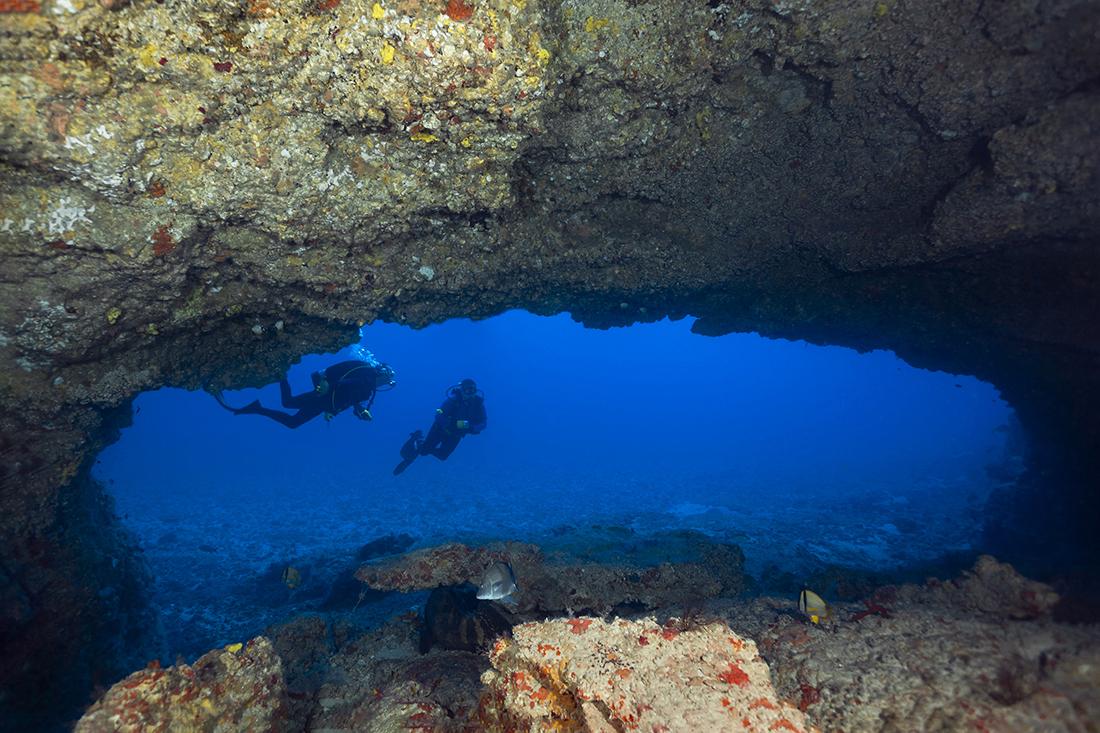
This is the case with a dive off Jupiter, Florida known as the Hole-in-the-Wall. Referred to by most locals as simply “The Hole,” the site is a cave within a deep-water ledge running north and south with a depth range of 120 on top to 147 feet at its deepest point. The cave itself features a 40-foot-wide by 10-foot-high opening on the ledge on the formation’s eastern face, which cuts back some 35 – 40 feet before making a hard-right turn to an exit nearly the same size where the ledge makes a slight dogleg to the west before continuing north.
In addition to the depth, which happens to be just over the edge of the 130-foot limit most training agencies deem for recreational divers, there is current to deal with. On most days, the western edge of the Gulf Stream sweeps across the site, bringing a north-flowing current of 1 to 2 knots. As a result, the Hole can only be done as a drift, with divers dropped in as much as 150 yards up current, hopefully timing their descent to arrive on the bottom just up current of the site.
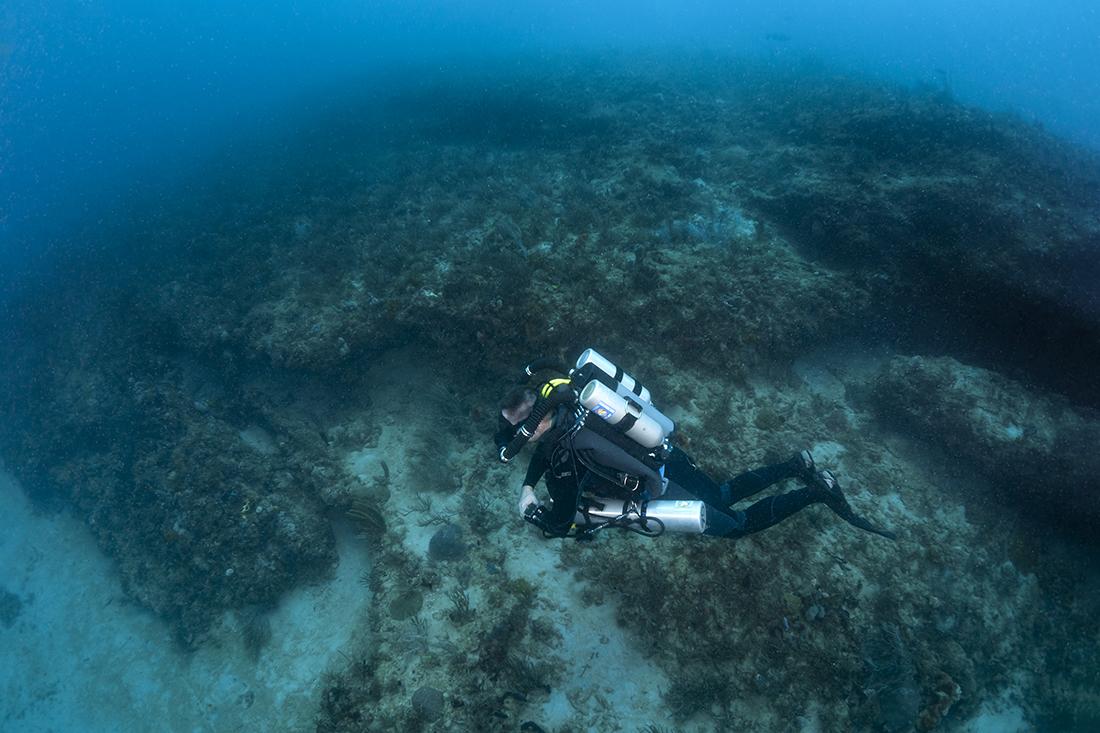
This scenario can present a challenge for both diver and dive operator. The boat crew must anticipate the current’s often variable speed to give divers sufficient time to descend, but not place them too far up current causing them to come up short of the cave at such depths, or too close, risking overshooting the cave during the descent. And on some days, the currents are so strong that the only sensible course is to abort the dive before even attempting to reach the ledge. Bottom line, it’s not a dive for novices.
But what truly gives Hole-in-the-Wall mystique is not the conditions, but its reputation for attracting the bigger players of the reef. After its discovery in the early 1970’s, spearfishermen would return from a trip to The Hole with huge cubera snappers at 40 to 80-pounds, large grey and Goliath grouper (before they were protected) together with tales of evading all kinds of large sharks.
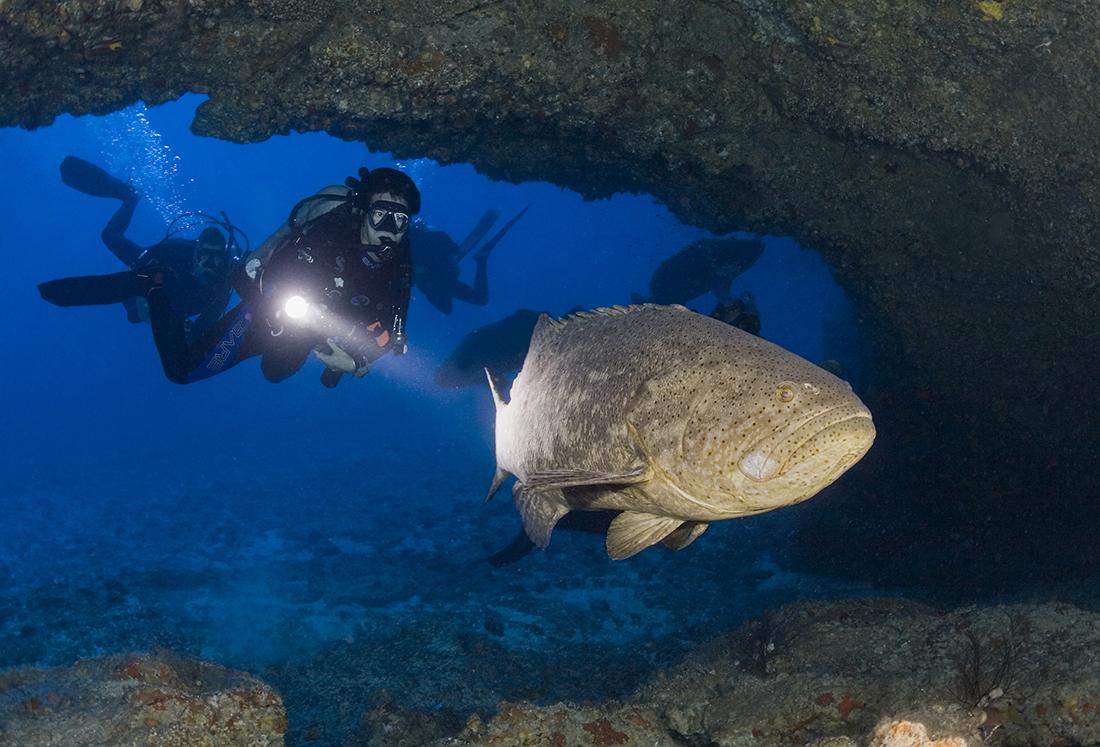
The Hole was a favorite with a group of local hunters who called themselves the Guerrilla Divers. In an era when men were men and risk was an accepted form of macho male expression, these guys were the Alpha Males of the Palm Beach dive scene. The dove long and hard–and considered newfangled Buoyancy Compensators to be crutches for the week. The saying was: “Anyone who needs a BC deserves to drown.”
One of the best known of the Guerilla Divers was Frank Hammett, owner of Frank’s Dive Shop. From the late ‘50s through the ‘70s, when the public still considered sharks to be evil eating machines, Frank was known as the “Shark Killer,” and the Hole-in-the-Wall was his personal playground. If Frank ran into a shark, it was often quickly dispatched, becoming another casualty of, as Frank put it, “Accidental death due to inappropriate behavior.”
According to the old timers, sand tiger sharks used to frequent The Hole before Frank changed the natural order by inserting himself as the new apex predator. The coast’s resident population of giant Goliath grouper proved to be even easier targets. By the time I started diving this area in the late 1970s (with Frank in the beginning), the goliaths were gone, and it seemed they would never return.
The Guerrilla Divers like Frank are history now having hung up their fins in retirement to be replaced by a different breed of diver, most with a greater appreciation for the sites that Mother Nature gives us.
As for the Goliath groupers that once frequented the Hole. Well, something remarkable occurred one summer day in August of 2001, they returned. Twelve years from the date they were placed under federal protection in 1990, Hole-in-the-Wall was once again a spawning aggregation site for immense groupers. For local divers this was a spectacle most had never seen as the fish had been out of existence for nearly 30 years.
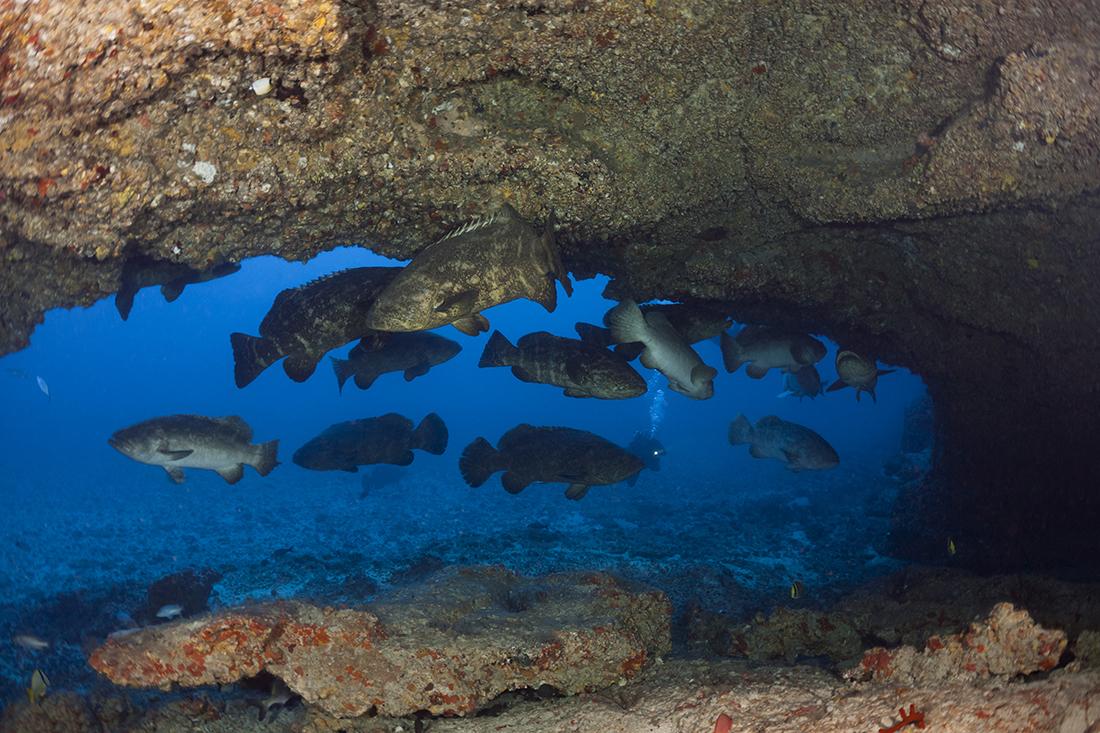
The discovery was unprecedented as it was the first large-scale observable aggregation in recent years to take place over natural bottom instead of a wreck. Researchers identified 42 large fish at the aggregation. Taking advantage of the opportunity, Florida State University’s Institute for Fishery Resource Ecology Department placed tags in 24 adult fish ranging 120 – 350 lbs. and identified three others that were tagged 20 miles up the coast near Stuart the previous year.
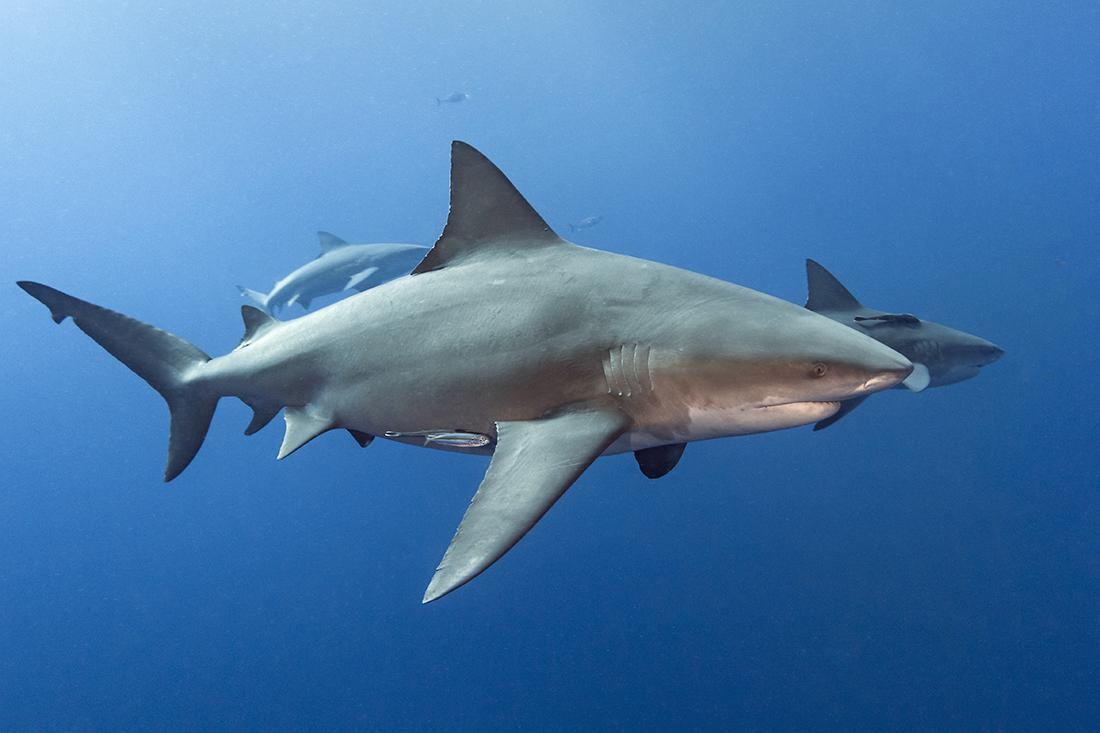
In the years since, animal activity at the Hole has continued to increase. In addition to the Goliath groupers, which begin to show up in August and linger through October, the sharks have also made a healthy comeback. Venture out with dive operators that run specialized charters to see the gals in the grey suits (most are females) and you'll find a healthy dose of just about everything–from large bull sharks (here year-round), silky, dusky and sandbar, to even tiger and greater hammerhead!
Even great whites have been sighted by fishermen and spearfishermen on occasion, but as yet not shown interest in the baiting practices of the shark charters.
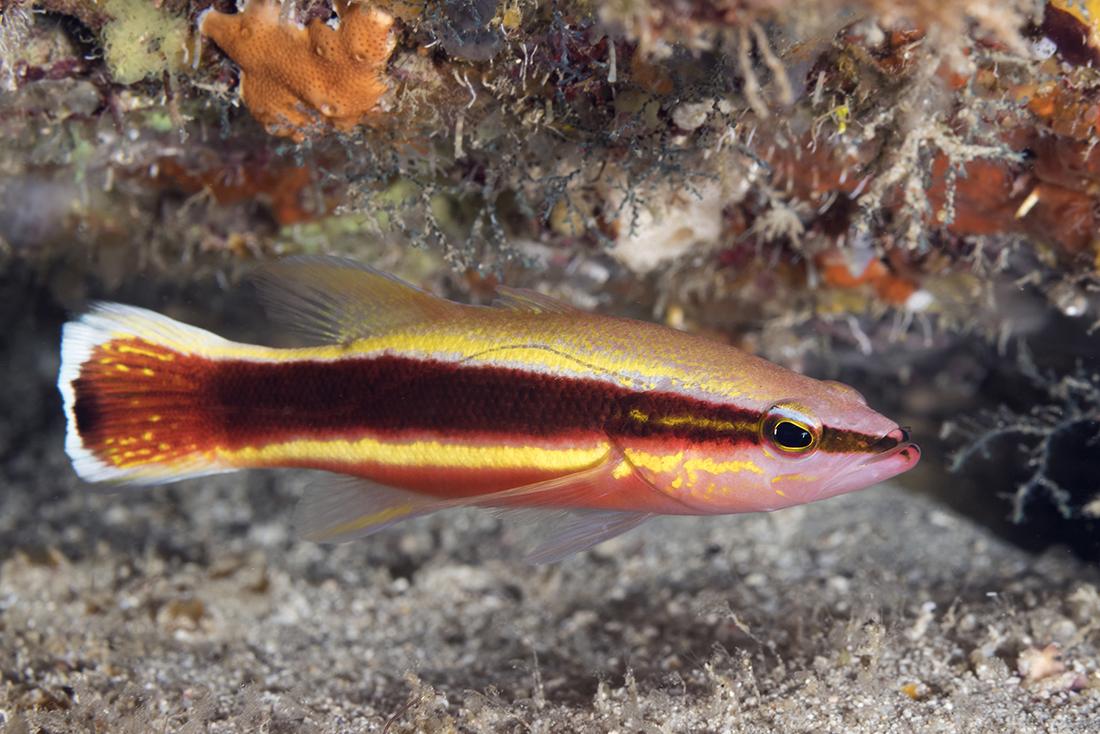
For divers who have the skills needed to perform drift dives, and can function safely at the lower end of the recreational dive envelope, the Hole-in-the-Wall is a site that should not be missed.
Who Goes There?
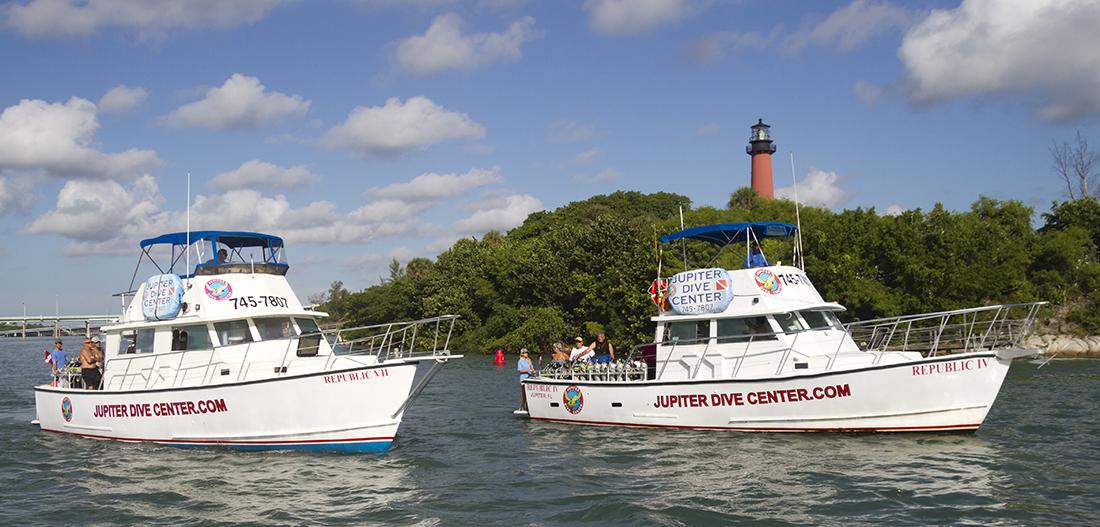
These days trips to the Hole-in-the-Wall are treated as a technical dive open to advance nitrox and rebreather divers alike as the dive will entail a decompression profile. Due to it's location near the southern end of Jupiter, FL, access to the site is provided by both dive operators out of the West Palm Beach area and up north in Jupiter, which offers a shorter run.
Should conditions look too unfavorable, most of these charters will switch to plan B dropping divers either at the Jupiter Wreck Trek featuring the Zion Train and Esso Bonaire wrecks, or the Princes Ann wreck of West Palm, which sits in 110 feet of water.
Visit the Palm Beach County Diving Association website for a list of charter operations in Palm Beach County. And by all means, if you can, get a dive or two in on Hole-in-the-Wall.
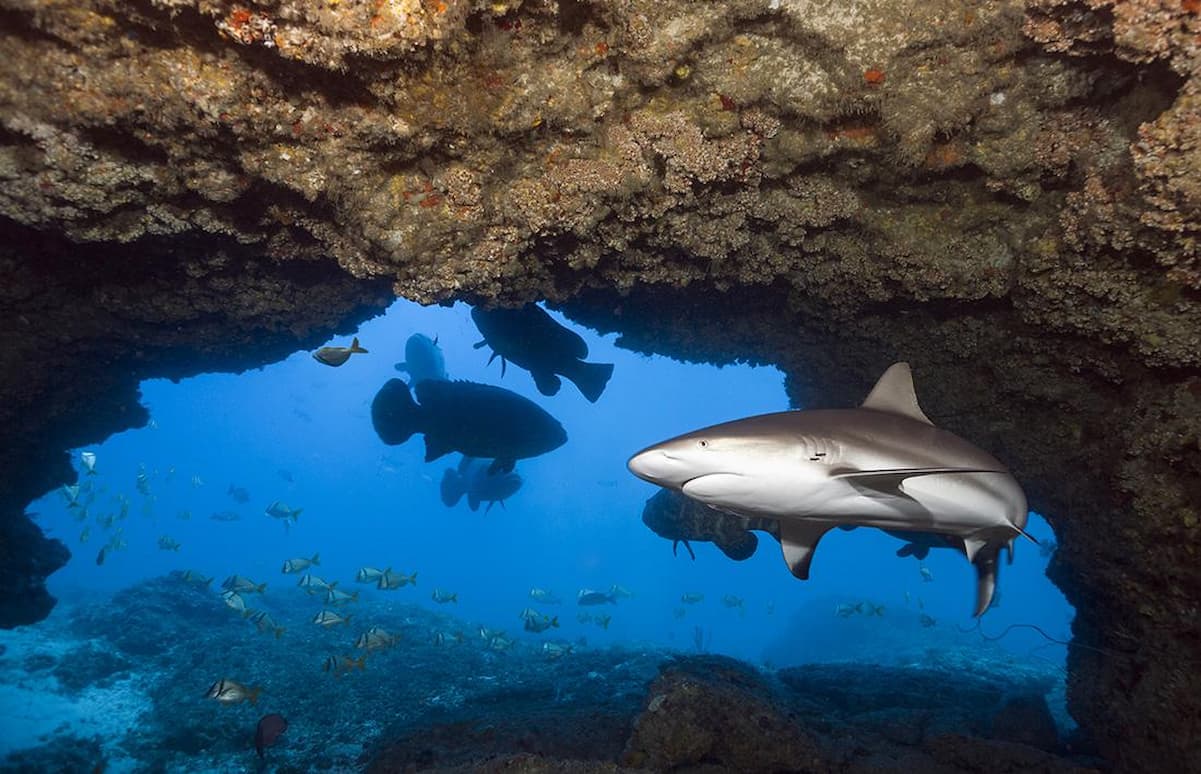








I dove hole in the wall a few years ago. STRICTLY, for advanced divers.. me.. PADI, rescue diver, with hundreds of dives. The dive is 140 feet to the floor of ocean, 157 feet as you enter cavernous environment. Ran into 7 foot black tip and 8 foot bull shark, inside the cavern. Strong current, but, 25-30 foot visibility. FOR ADVANCED DIVERS ONLY.
I dove the hole in the wall back in the late 80’s. It is amazing how much more energy is required to move your body around at that depth. There were about four of us on that dive, and we kicked out a big bull shark. They like to go into the hole to rest sometimes, as the current flowing through allows them some rest. We had some good times on the reefs down there: some of the best in the world back then.